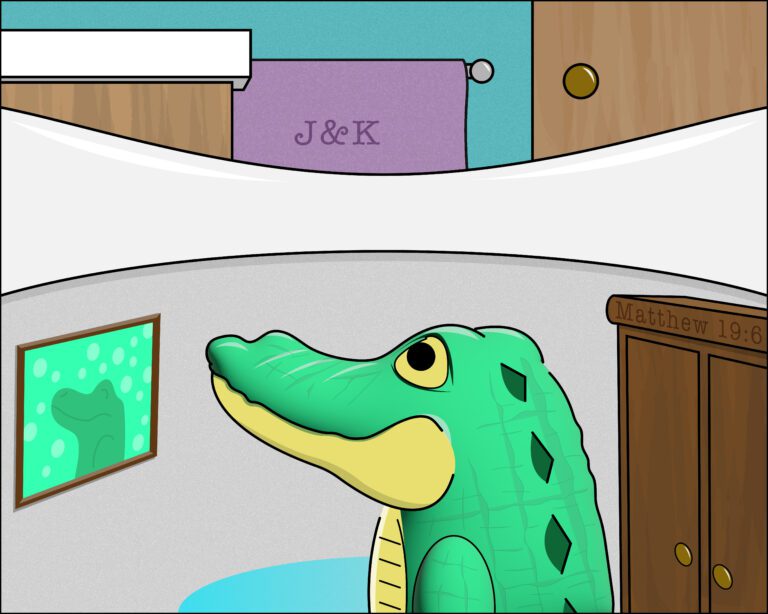Crucifixion is a piece dedicated to the living sacrifice that our Lord and Savior Jesus Christ made dying on the cross to save us from our sins, and in exchange give eternal life to whomever believes. This piece is inspired by the Shroud of Turin, the Sudarium of Oviedo, the crucifixion accounts in the Gospels, other scriptural references and ties, and loosely on Ron Wyatt’s testimony of finding the Ark of the Covenant. The overall composition is comprised of 3 sections: first Christ’s crucifixion. Second, the reversal of the curse and fall of man and other ties/references to His crucifixion. Third, the Ark of the Covenant and Christ’s blood falling onto the mercy seat. Below I’ve included a small synopsis of the inner-workings of this piece.
Illustrator, 20″x72.5″

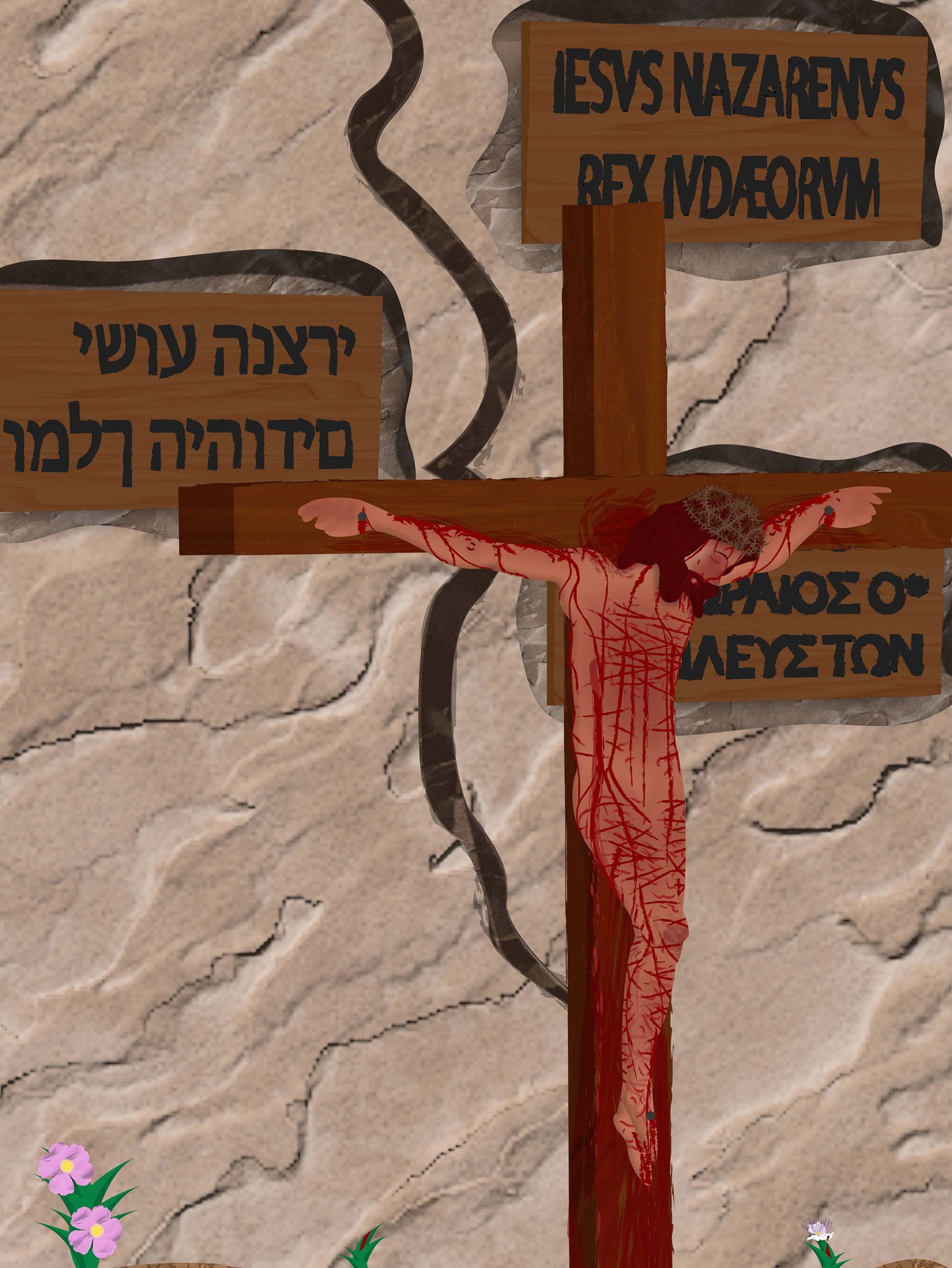
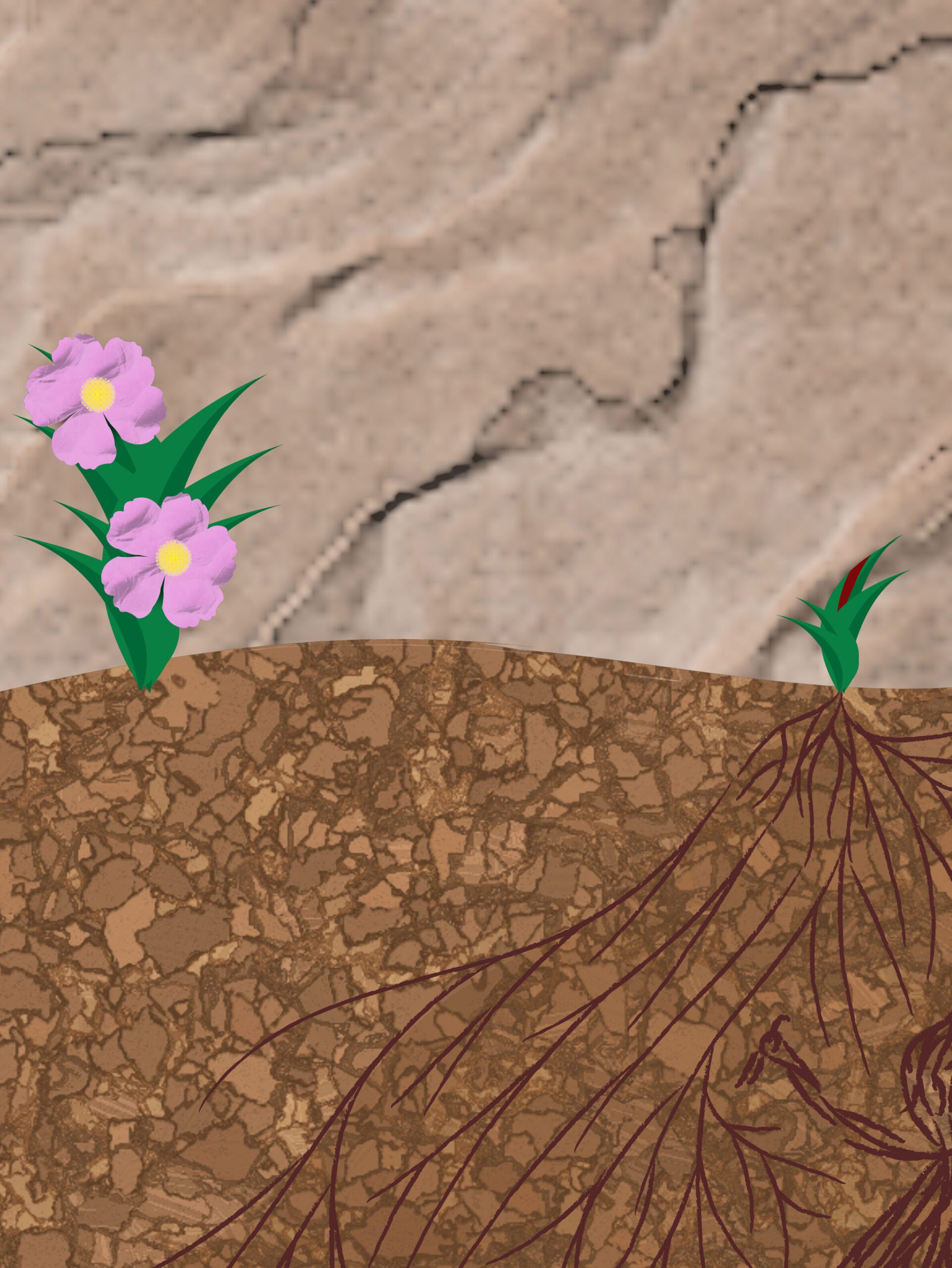
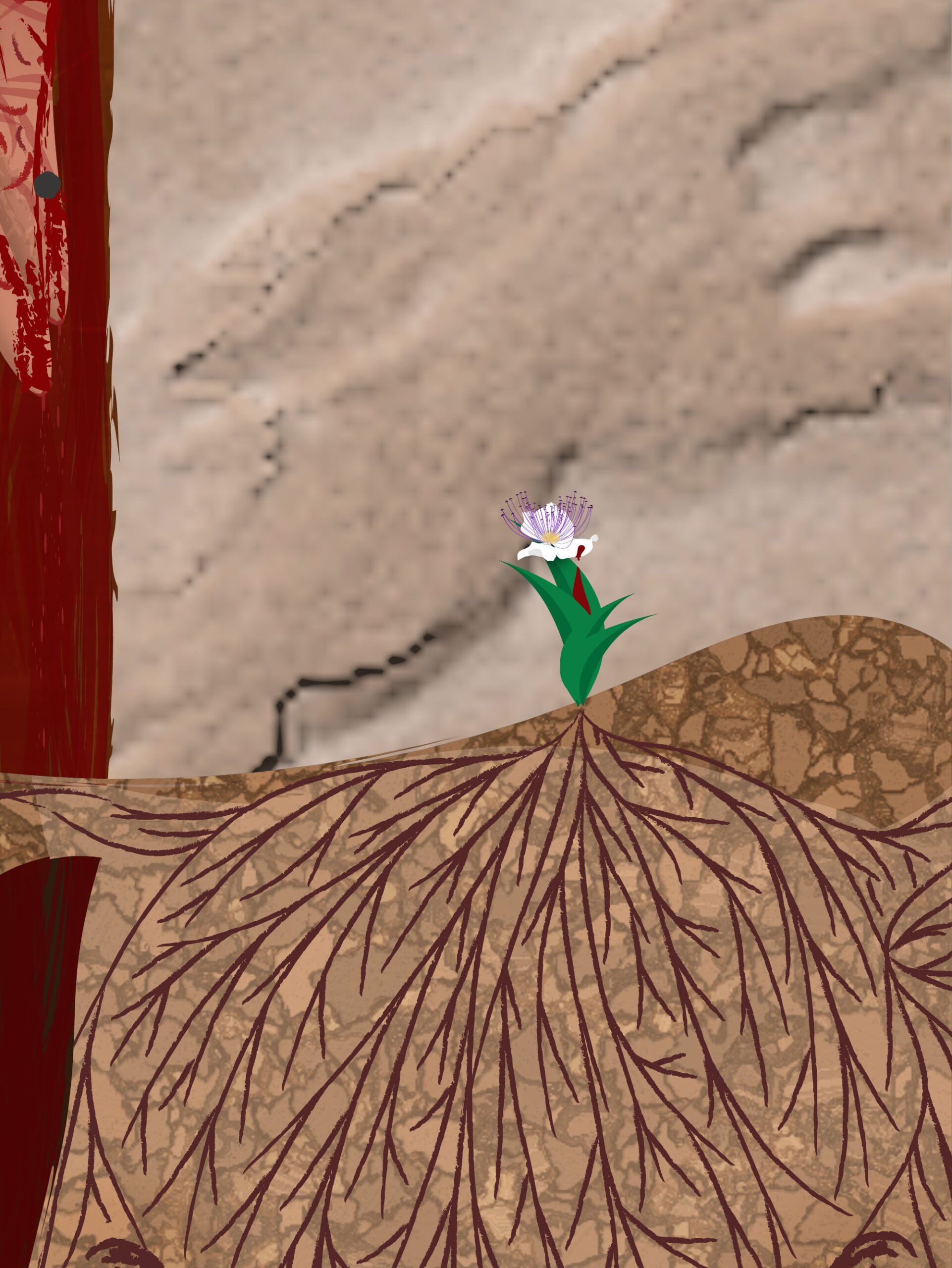
The top section of this piece depicts what Jesus would’ve looked like hanging on the cross, referencing injuries found on the Shroud of Turin and Sudarium of Oviedo. The charges written on the 3 signs hung above Christ’s head were inspired by photographs and testimonial of Ron Wyatt, as well as the cracking in the mountain as result of the earthquake as described in Matthew 27:51-54. At the bottom of this third, two species of flowers are represented aligning with what was found on the shroud: Cistus Creticus and Capparis Aegyptia. What makes these two flowers important is that the Cistus Creticus comes from the Jerusalem Hebron zone, and the imaging left of the Capparis Aegyptia, which display a distinctive pattern during daylight hours, would’ve needed to be picked between 4-6pm on the day to leave the imprints that they did on the shroud. These two pieces of evidence (scientifically proven!!), highly suggest that the Shroud could’ve been what was used to wrap Jesus’ body after His crucifixion. You can also see the blood dripping from where His hands were pierced, sprouting two plants from the ground, one of which a Capparis Aegyptia bloomed. The other implication of the flowers is that Jesus was crucified in a garden, which also would reflect back to the fall of man in the garden of Eden which will appear later.
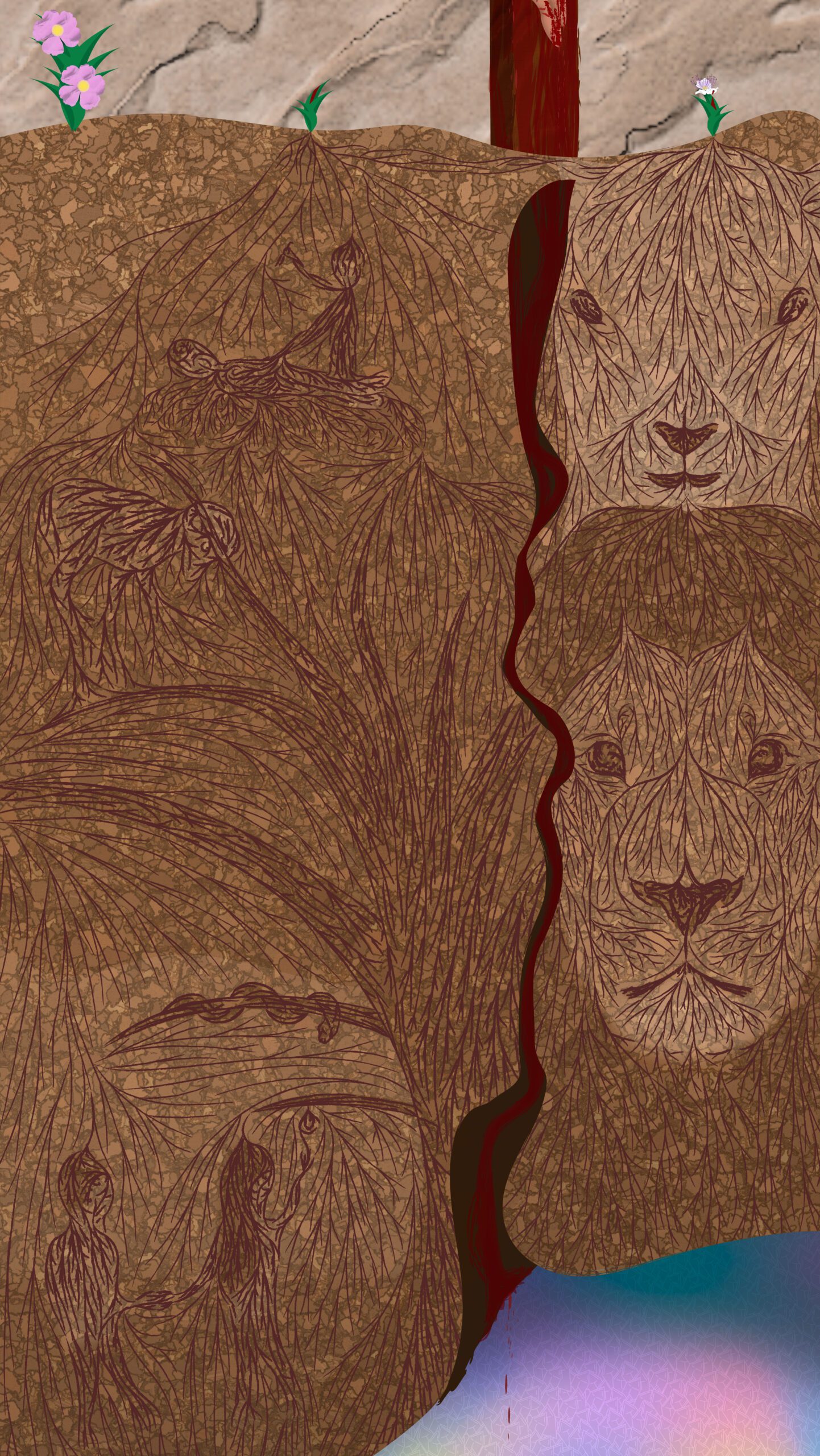
The middle section of this piece artistically uses the styling of roots, as produced from the plants mentioned prior, to create loose depictions of Abraham sacrificing Isaac and the fall in the garden on the left, and a lion and lamb on the right. The implications of Abraham sacrificing Isaac tie to the crucifixion as God asked Abraham to sacrifice his only son on Mount Moriah, and 2,000 years later on the same mountain, God gave up His only son Jesus as a sacrifice to save us from our sins! In Isaac’s case, God provided a ram who was stuck in brush and thickets to take Isaac’s place, and Jesus wore a crown made of brush, thorns, and thickets. As for the fall in the garden, Adam and Eve in their sin recognized their nakedness and covered themselves, and so Jesus was crucified barren without clothing, as told in Luke 23:34 when lots were cast for His garments. The fruit used in committing the sin came from the tree of knowledge, and as such Jesus was crucified on a cross made of wood from trees. On the right a lamb is depicted referencing Isaiah 53:7 describing Jesus like a lamb led to be slaughtered, “He was silent”. The lion references Revelation 5:5 as Jesus, “Lion of the tribe of Judah, the Root of David, has triumphed” over death!
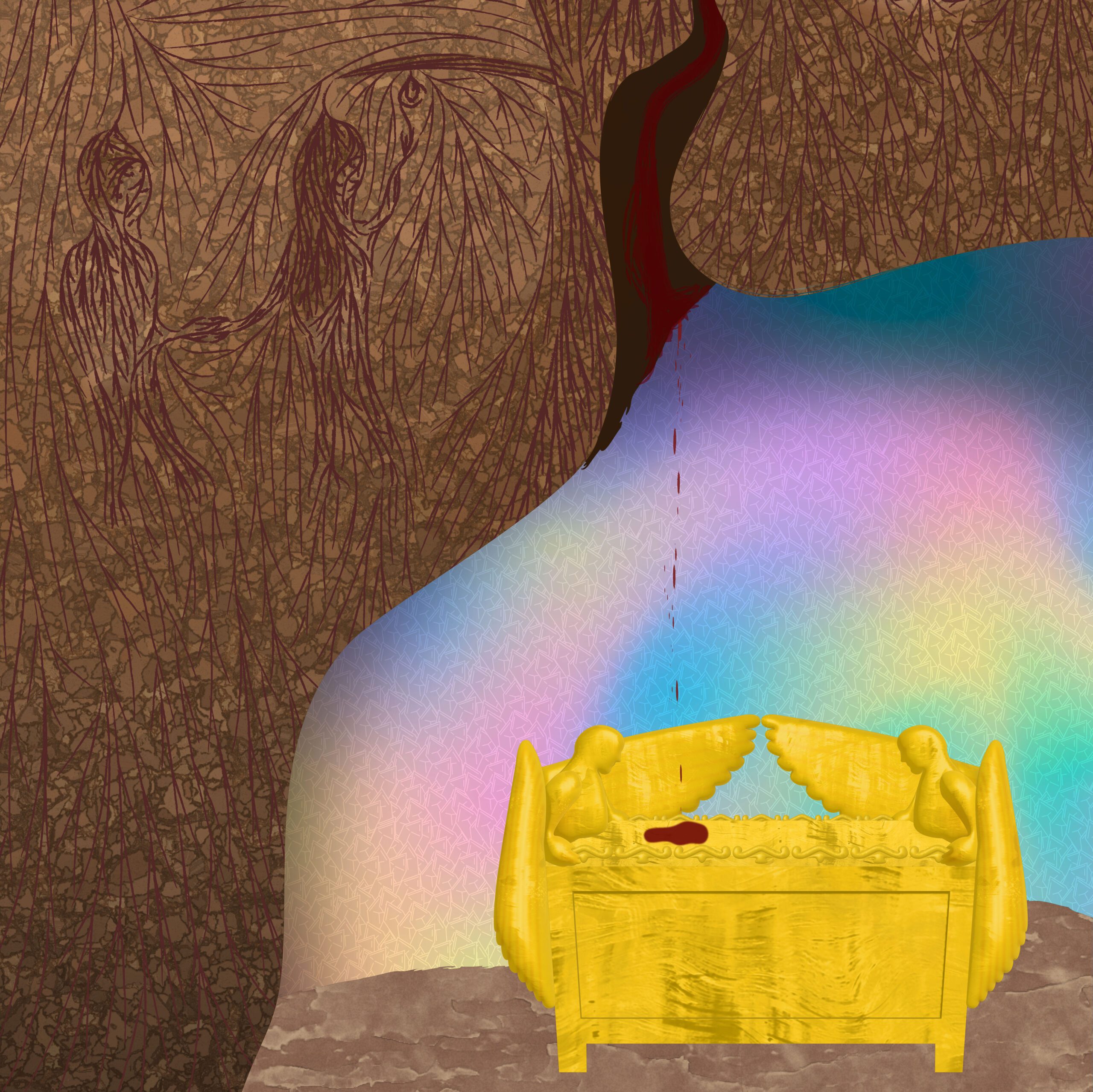
The bottom section of this piece depicts Jesus’s blood landing and resting on the left portion of the Ark of the Covenant as described by Ron Wyatt’s testimony of “finding it”. While I won’t go into detail of his findings or claim that they are true, I was inspired by them enough to represent them here. The most important detail is Christ’s blood flowing from the cross down the alleged crack and landing on the left side of the mercy seat. All previous blood from sacrifices made alongside the ark were explicitly to fall on the right side, in this way Jesus’s blood falling on the ark only affirms Him as a living sacrifice for our sins. Wyatt also mentioned that behind the ark was a wall of crystals illuminating all the colors of the rainbow. I also included this detail as the imaging provides a reference back to God’s covenant with Noah after the flood in that never again would He destroy His creation by flood but be with us through the storms, reminding us of this covenant using rainbows.


